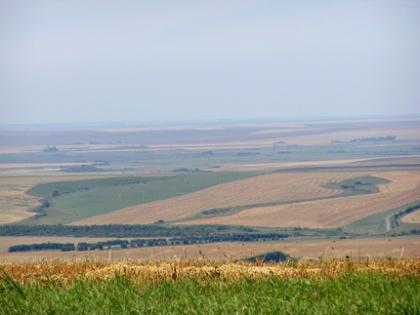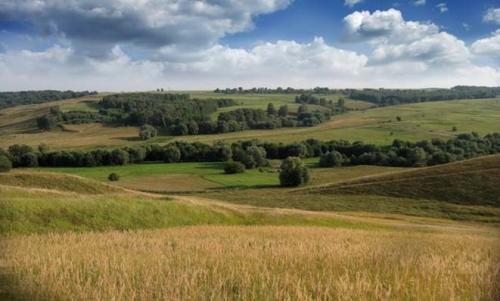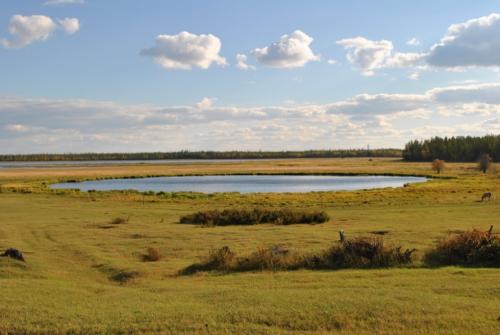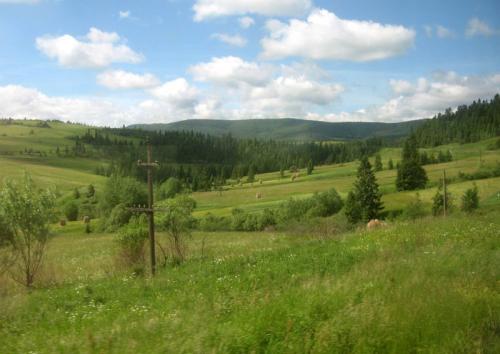Plain is one of the main forms of terrestrial relief. On the physical world map, the plains are indicated in three colors: green, yellow, and light brown. They occupy about 60% of the entire surface of our planet. The most extensive plains are confined to plates and platforms.
Characteristics of the plains
A plain is an area of land or the seabed with a slight fluctuation in heights (up to 200 m) and a slight slope (up to 5º). They are found at different heights, including at the bottom of the oceans.
A distinctive feature of the plains is a clear, open horizon line, straight or wavy, depending on the topography of the surface.
Another feature is that it is the plains that are the main territories inhabited by people.
Natural areas of the plains

Since the plains occupy a vast territory, almost all natural zones exist on them. For example, tundra, taiga, mixed and deciduous forests, steppes and semi-deserts are represented on the East European Plain. Most of the Amazonian lowland is occupied by jungle, and the plains of Australia are semi-desert and savannah.
Plains
In geography, the plains are divided according to several criteria.

1. By absolute height distinguish between:
... vile ... Height above sea level does not exceed 200m. A striking example is the West Siberian Plain.
... Exalted - with an elevation difference from 200 to 500 m above sea level. For example, the Central Russian Plain.
... High plains , whose level is measured by marks over 500 m. For example, the Iranian Highlands.
... Depressions - the highest point is below sea level. Example - Caspian lowland.
Separately, underwater plains are distinguished, which include the bottom of depressions, shelves and abyssal areas.

2. By origin plains are:
... Accumulative (sea, river and mainland) - formed as a result of the impact of rivers, ebb and flow. Their surface is covered with alluvial sediments, and in the sea - marine, river and glacial sediments. From the sea can be cited as an example the West Siberian Lowland, and from the river - the Amazon. Among the mainland, the accumulative plains include the marginal lowlands, which have a slight slope to the sea.
... Abrasive - formed as a result of the impact of surf on land. In areas where strong winds prevail, sea waves are frequent, and the coastline is formed from weak rocks, this type of plains is more often formed.
... Structural - the most difficult in origin. In the place of such plains, mountains once rose. As a result of volcanic activity and earthquakes, the mountains were destroyed. Magma flowing out of cracks and splits bound the land surface like armor, hiding all the unevenness of the relief.
... Lakes - are formed in the place of dried up lakes. Such plains are usually small in area and are often bordered by coastal ramparts and ledges. An example of a lake plain is Jalanash and Kegen in Kazakhstan.

3. By the type of relief distinguish between plains:
... flat or horizontal - The Great Chinese and West Siberian Plains.
... wavy - are formed under the influence of water and water-glacial flows. For example, the Central Russian Upland
... hilly - in the relief there are individual hills, hills, ravines. An example is the East European Plain.
... stepped - are formed under the influence of the internal forces of the Earth. Example - Central Siberian Plateau
... concave - they include the plains of intermontane depressions. For example, the Tsaidam Basin.
Ridge and ridge plains are also distinguished. But in nature, the mixed type is most often found. For example, the Pribelskaya ridge-undulating plain in Bashkortostan.
Plains climate

The climate of the plains is formed depending on its geographical location, the proximity of the ocean, the area of the plain itself, its length from north to south, as well as the climatic zone. Free movement of cyclones ensures a clear change of seasons. Plains are often rich in rivers and lakes, which contribute to the formation of climatic conditions.
The largest plains in the world

Plains are common on all continents, with the exception of Antarctica. In Eurasia, the largest are the East European, West Siberian, Turan, and East Chinese plains. In Africa - the East African plateau, in North America - the Mississippi, Great, Mexican, in South America - the Amazonian lowland (the largest in the world, its area is over 5 million square meters. Km) and the Guiana plateau.




